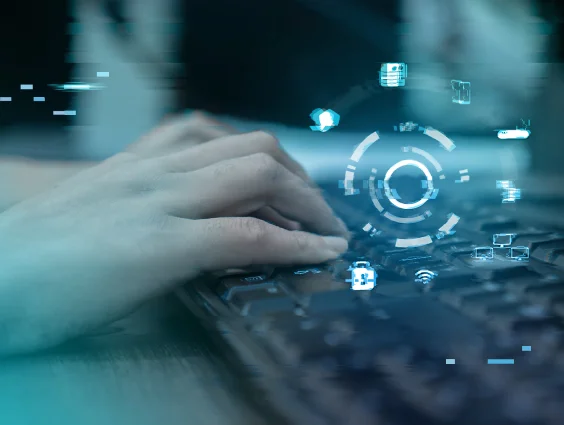Cybersecurity breaches make headlines every month, but one alarming factor stands behind many of them: unauthorized access. Remember the infamous Equifax breach in 2017? Hackers exploited an unpatched software vulnerability, gaining unauthorized access to the personal data of over 147 million people. That’s the dangerous power of unauthorized access in action.
Unauthorized access is the gateway to countless cybersecurity threats—from data theft and operational disruptions to privacy violations. This guide will unpack what unauthorized access means, how it happens, and practical strategies to identify and prevent it.
What is unauthorized access?
Unauthorized access refers to any attempt to enter systems, networks, or data without proper authorization. This happens externally (e.g., hackers breaching your network) or internally (e.g., an employee misusing their access).
It’s a leading cause of data breaches worldwide, frequently putting organizations in violation of compliance standards like GDPR, HIPAA, and SOC 2. From a stolen password to an exploited software vulnerability, unauthorized access is often the initial step of a major security incident.
Common types and causes of unauthorized access
Unauthorized access isn’t a one-size-fits-all issue. It comes in many forms, each with unique attack vectors. Here are the key types:
Credential Theft
How it happens: Phishing attacks, keyloggers, and brute-force attempts are common ways to steal your login credentials. Once credentials fall into the wrong hands, attackers can quietly infiltrate your systems.
Insider Threats
How it happens: Disgruntled employees or careless insiders can intentionally or unintentionally misuse their access, leading to potential breaches.
Privilege Misuse
How it happens: Users with excessive permissions may access or manipulate information they shouldn’t be allowed to. Without clear role-based access control (RBAC), this becomes a ticking time bomb.
Exploited Vulnerabilities
How it happens: Unpatched software, misconfigured systems, or outdated technology are common entry points for attackers.
Session Hijacking
How it happens: Attackers steal session cookies or tokens, allowing them to impersonate a legitimate user and hijack an active session.
Real-world examples of unauthorized access
To understand the scope of the threat, here are some notable cases where unauthorized access wreaked havoc:
The Equifax Breach
Attackers exploited an unpatched Apache Struts vulnerability, gaining unauthorized access to sensitive data, including social security numbers.
Uber Breach via Multi-Factor Authentication (MFA) Fatigue
Hackers used social engineering to bombard an Uber employee with fake MFA requests. Once the employee relented, attackers accessed internal tools and sensitive information.
Disgruntled Ex-Cloud Engineer Wiped Bank’s Data
In 2023, a California cloud engineer was sentenced to 24 months in prison after launching a network intrusion at a former job. After being fired from his job at a bank, the man used his company-issued laptop, which he failed to return after termination, to access the bank’s network “without authorization.” He then deleted code repositories, ran malicious scripts to delete logs, and even left taunts in the bank’s code for former colleagues.
SolarWinds Attack
A supply chain attack compromised SolarWinds software updates, leading to unauthorized access to multiple government and private-sector entities worldwide.
How unauthorized access happens
Understanding how unauthorized access occurs is crucial to staying ahead of potential attackers. Here are the most common methods bad actors use:
Credential Compromise: Attacks such as phishing, password reuse, and credential stuffing rely on poor password hygiene.
Software Exploitation: Attackers exploit zero-day vulnerabilities or outdated software to infiltrate systems.
Social Engineering: Fake tech support calls and impersonation are classic ways attackers manipulate employees into granting access.
Physical Access: Lost USB drives, unsecured devices, or poorly guarded premises can expose critical systems.
Privilege Escalation: Hackers use lateral movement techniques to gain higher privileges within systems.
Risks and consequences of unauthorized access
When unauthorized access occurs, the consequences can be devastating. Here’s what’s at stake:
Data Breaches: Sensitive data, such as customer info and trade secrets, can be stolen or leaked.
Compliance Violations: Companies may face hefty fines due to regulations like GDPR or HIPAA.
Operational Disruption: Ransomware attacks and system downtime can bring business operations to a halt.
Loss of Trust: Customers lose confidence in brands that mishandle their data, leading to reputational damage.
Financial Costs: Lawsuits, recovery expenses, and penalties can cost businesses millions.
How to detect unauthorized access
Spotting unauthorized access in time can make all the difference. Here are ways to detect potential breaches:
Login Anomalies: Track unusual logins, such as those from unfamiliar locations or outside normal hours.
Privilege Escalation Alerts: Flag attempts to elevate user privileges beyond standard roles.
File Access Monitoring: Keep an eye on file access logs for signs of data exfiltration.
Threat Intelligence: Correlate suspicious patterns with known threat intelligence feeds.
How to prevent unauthorized access
Preventing unauthorized access requires a multi-layered approach. Here’s what you can do to safeguard your systems:
Implement MFA: Add an extra layer of security to user logins.
Enforce Least Privilege Access: Ensure users only have the access they need for their roles.
Regularly Patch Systems: Stay updated on software patches and fix vulnerabilities promptly.
Adopt Zero Trust Principles: Never assume trust; verify continuously.
Network Segmentation: Limit lateral movement by dividing your network into segments.
Train Employees: Provide regular training, such as Huntress Managed Security Awareness Training, to enable your employees to detect phishing and social engineering tactics.
Tools and technologies that help prevent unauthorized access
These tools can bolster your defenses against unauthorized access:
Identity and Access Management (IAM): Platforms like Okta and Microsoft Entra streamline secure access management.
Endpoint Detection and Response (EDR): Tools like Huntress Managed EDR protect endpoints from compromise.
Security Information and Event Management (SIEM): Huntress Managed SIEM can analyze vast amounts of security data to detect threats.
Data Loss Prevention (DLP): DLP solutions prevent unauthorized exfiltration of sensitive data.
Privileged Access Management (PAM): CyberArk and BeyondTrust enforce strict controls over privileged accounts.
FAQs on Unauthorized Access in Cybersecurity [[Q]] What is unauthorized access in cybersecurity?
Unauthorized access happens when someone gains entry into a system, network, account, or data without having the proper permissions. This could mean accessing sensitive information, infiltrating a secure network, or using compromised accounts without consent.
There are several ways it can happen, including:
Stolen or leaked passwords
Exploited security vulnerabilities in software or systems
Phishing attacks that trick users into sharing credentials
Weak or reused passwords, making them easy targets for hackers
The impact can range from irritating to catastrophic, such as:
Data theft or breaches, leading to loss of sensitive information
Financial damage or fraud
Disruption of services, including critical infrastructure
Damage to reputation for individuals or businesses
While everyone is a target, high-risk groups include organizations with sensitive data (like financial, healthcare, or government entities), individuals using weak passwords, or companies with outdated security protocols. Small businesses are often targeted, too, as they may lack robust security measures.
To safeguard yourself or your organization, you can:
Use strong, unique passwords and change them regularly
Enable MFA wherever possible
Keep software and systems up to date to patch vulnerabilities
Train yourself and your team to spot phishing and social engineering attacks
Monitor for suspicious activity on your accounts and networks
Not always. Sometimes, it results from negligence, like sharing passwords carelessly or leaving devices unattended. However, malicious actors often exploit these lapses to access systems.


Staying Ahead of Cyber Threats
Unauthorized access often marks the beginning of a major cybersecurity breach. It isn’t just a technology issue but involves humans and processes, too. By combining continuous monitoring, proactive policy enforcement, and user education, you can significantly lower your risk.
“Although we do a lot of focusing on a threat actor compromising data, unapproved internal access definitely needs to be on your radar,” said Ethan Tancredi, manager, technical account management at Huntress. “Are you making sure that least privilege access is maintained? If somebody is granted greater access, do you have a process in place to review and remove that access? When new users are created are you copying an existing user's rights without examining all of the access that person has? MFA and a password manager to ensure unique strong passphrases will be key tools to combat a threat actor, and process and procedure is going to be key to deal with internal people accessing data they might not be supposed to see.”
Start by implementing the best practices outlined here and investing in the right tools to protect your network. Want to take your security to the next level? Explore Huntress managed solutions designed to detect unauthorized access before it’s too late.


Protect What Matters









